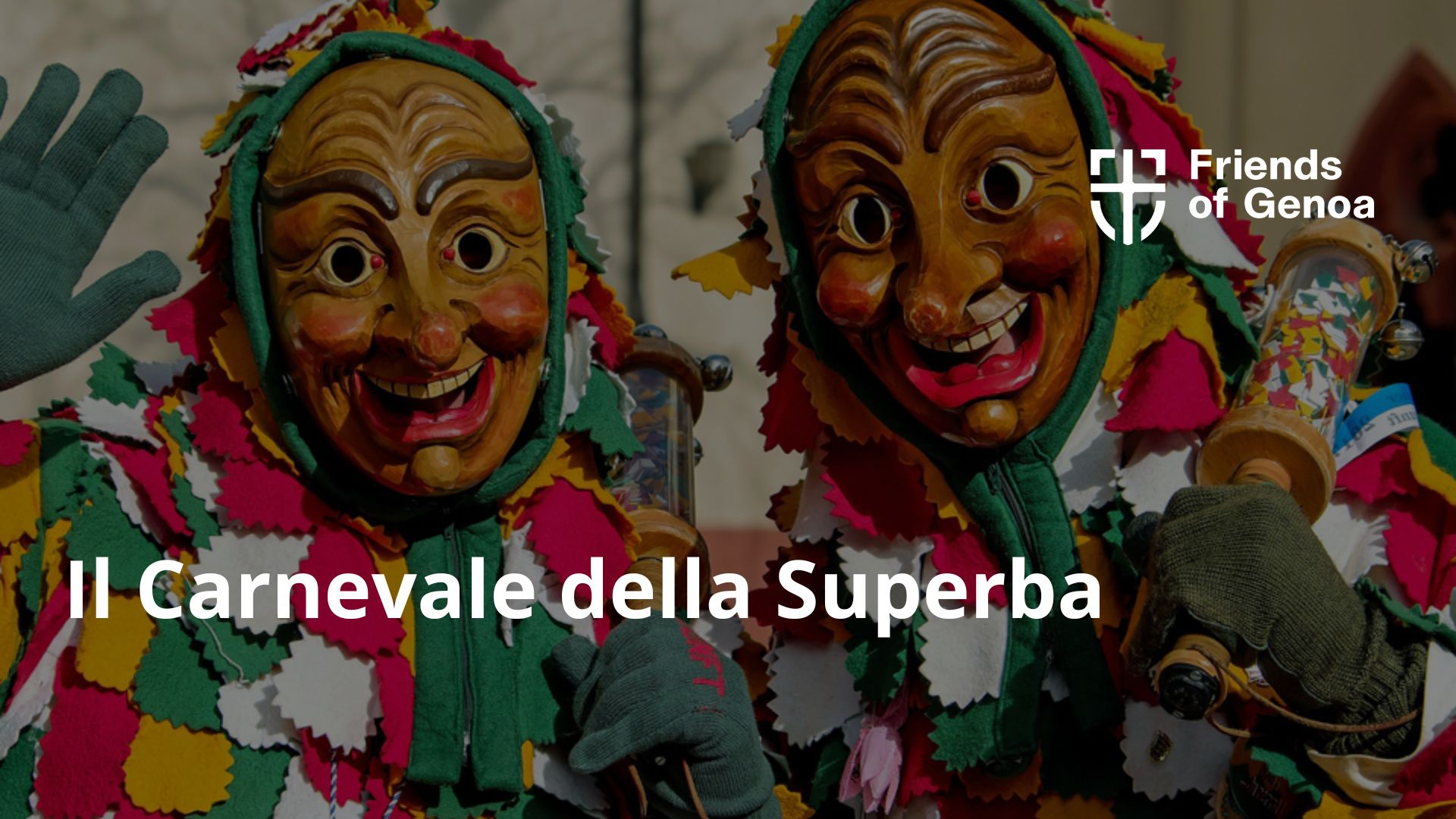The carnival of the “Superba”
Il Carnevale è una delle feste più importanti all’interno del panorama nazionale e internazionale, che vede stravaganti carri allegorici e travestimenti eccentrici colorare le strade delle città e appassionare grandi e piccini.
Carnival is one of the most important festivals both at national and international level, which sees extravagant floats and eccentric disguises color the streets of cities and entertain people of all ages. The Carnival of the “Superba” has its roots in the distant Middle Ages when no opportunity was missed to animate the city with masks, jousts, tournaments and parades. Today, the city of Genoa continues to keep alive the traditions of the festivities associated with this occasion, in the name of joy and fun.
The history of the carnival of the “Superba”
The origins of Carnival date back to around the 13th century, when people wrapped themselves in the so-called "domini" - wide hooded cloaks - and shady masked figures roamed the streets, committing crimes and vandalism.
People danced to the rhythm of the fife playing "Rionda", a roundabout dance around the numerous bonfires lit in the streets of the city, or the 'Moresca," a dramatic dance recalling the struggle between Christians and Turks in which the participants faced each other in bows alternating with games of weapons. There was also no shortage of "Gighe" or "Perigodin," a fishermen's dance derived from Tuscan perondino and Provençal périgourdine.
Towards the end of the 1500s, the “Accademia degli Addormentati e dei Magnifici della Repubblica” introduced the "Carrossèzzi," parades that initially took place on the Bisagno esplanade, then also from Piazza Fontane Marose along Via Garibaldi and Via Cairoli, Via Balbi until reaching Piazza Acquaverde. During these parades, the ladies threw flowers, the knights threw small eggs containing scented fragrances, while the naughty ones amused themselves by throwing rotten eggs.
Starting from the 1700s, the Carnival moved from the squares to the noble palaces of the city, as the Genoese took part in the "festoni" or "lanternette," (lit. small lanterns) named after the lamps hung on the walls.
Between 1924 and 1970, the "carrettini" were born, carts that gave life to the Indianapolis Grand Prix at the end of the "feriae matricularum" of the Genoese university students, who would race down the slopes of the Righi via Via Cabella, Manin, Via Assarotti until they reached Piazza Corvetto. Fun fact: there was no first and last edition of the cart races...they were all strictly the" 69th".
The masks
The world of the masks is full of funny and quirky characters who still preserve the names of the Ligurian tradition and are a reflection of the character and attitudes of Ligurians themselves. Here are the most popular ones:
- Capitan Spaventa o Capitan Fracassa is a mask dating back to the Spanish occupation of Genoa in 1522. It represents, in fact, a funny Spanish soldier who brags about amorous and warlike adventures, who speaks a mixed language of Casilian and Italian words. His most typical costume is a yellow and red striped suit, a red cloak lined with yellow, and a hat with multicolored feathers;
- Cicciolin is the mask elected King of Carnival in Savona, the only one included in the official roll of Italy's 50 masks. Cicciolin is a sailor with seven children had by seven different wives, one for each port. With a grumpy, but generous character, he always wears three necklaces around his neck: a green one, a brown one and blue one to symbolize the hills, the land and the sea of Liguria.
- Baciccia della Radiccia ans his friend Barudda are among the main masks of the Genoese puppet theater: drunken, grumbling, but kind. Baciccia, a Genoese nickname for John the Baptist, can be recognized by his red and blue hat, black jacket, and bow tie. He loves to drink and fight for justice by punishing the wicked with his cane involving his friend, Barudda, who is stuttering and kind. Baciccia is called "della Radiccia" to jokingly give him a noble title. In Genoese "radiccia" stands for chicory, radicchio or their roots.
- O Paisan is the inland farmer. His costume is a red striped woolen hood, the "trentinna," dark stiff hat with a wide brim, pants and jacket of brown moleskin or green or red velvet. He carries a green or red umbrella, a small lantern, a basket or bag of chestnuts, and a billhook.
- A Paisann-a is the wife of the Paisan. Dressed in a lace blouse with a heavy velvet corset over it, she also has a long colorful skirt, alternating light and dark stripes or flowers, and petticoat with flaps called "fadette" with a "picaggia." On the head she wears the mezzaro to carry weights.



